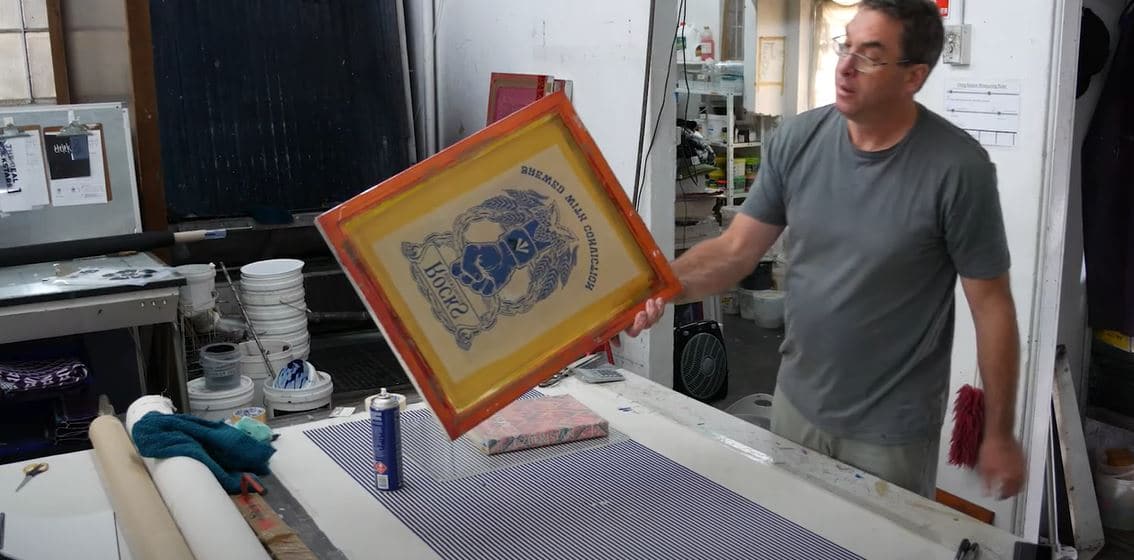The Essential Overview to Understanding Screen Printing and Its Versatile Utilizes
Screen printing has an abundant history that goes back to ancient times, advancing right into an innovative method made use of across numerous markets today. This guide discovers the complexities of the screen printing procedure, describing its applications in home, advertising, and style décor - 10:9 Design Abilene. Comprehending these fundamentals can open imaginative possibility for both artistic and business tasks. The following sections will expose essential pointers and techniques to enhance one's screen printing ventures
The Background of Screen Printing
Screen printing has roots that map back centuries, its development shows the technological and artistic innovations of different cultures. Coming from ancient China, the strategy was originally made use of for enhancing fabrics and later spread to Japan, where it ended up being integral to Ukiyo-e woodblock printing. The method moved to Europe in the 18th century, where it obtained popularity amongst artisans and commercial printers. The invention of photo solution in the 20th century reinvented screen printing, enabling more detailed styles and higher efficiency. Musicians like Andy Warhol better pushed its popularity, making use of the tool to develop renowned works that combined commercialism and art. By the late 20th century, screen printing had actually developed itself as a flexible strategy, utilized in fashion, marketing, and great art. Today, it remains to develop, integrating electronic modern technology and increasing its applications across various sectors.
The Screen Printing Refine Explained
Screen printing transforms artistic visions into concrete layouts via a collection of accurate actions. At first, an image is developed and afterwards moved onto a screen, generally made from fine mesh textile extended over a framework. A light-sensitive solution is put on the screen, which is subjected to light, setting in areas not covered by the picture. After rinsing the unhardened solution, a stencil is developed.
Next off, the screen is placed over the substratum, whether it be fabric, paper, or one more material. Ink is then pushed through the open locations of the stencil using a squeegee, depositing the style onto the substrate below. This procedure can be duplicated for multiple colors, needing separate displays for each hue. The printed item is cured using warm to assure the ink adheres properly, resulting in a sturdy, dynamic layout prepared for usage.
Types of Screen Printing Techniques

In addition, specialty strategies, such as discharge screen printing, eliminate dye from the material to produce softer prints, while foil screen printing applies metallic aluminum foil to achieve a glossy surface (10:9 Design near me). Each method provides unique features, accommodating numerous creative needs and manufacturing scales, ultimately increasing the opportunities within the screen printing domain name
Applications of Screen Printing in Various Industries

Additionally, the signs and advertising industries make use of screen printing for producing captivating displays and banners. This approach permits strong shades and intricate designs that catch attention. In electronic devices, screen printing is utilized for using conductive inks to circuit boards, crucial for component links. Furthermore, the home decoration sector welcomes screen printing to generate unique designs on textiles and wall surface art. On the whole, screen printing functions as a crucial tool throughout varied fields, boosting products with individualized and aesthetically enticing graphics.
Tips for Successful Screen Printing Projects
While taking on a screen printing project, cautious interest to information can substantially enhance the last result. Initially, selecting high-grade products is crucial; this includes the screen, inks, and substratums. Utilizing appropriate mesh matters can affect ink deposition and information resolution. Preparation is just as crucial; complete cleansing of displays and appropriate direct exposure times assure crisp prints.
Next off, exact registration is vital for multi-color prints. Making use of alignment devices can aid accomplish specific layering. Additionally, testing prints on scrap products prior to production aids determine possible concerns without wasting sources.

Frequently Asked Concerns
What Products Are Best for Screen Printing on Textile?
Cotton and polyester blends are optimal for screen printing on fabric as a result of their toughness and ink absorption. In addition, specialty fabrics like silk or canvas can create one-of-a-kind appearances and coatings, improving the general style top quality.
Just how Do I Clean and Maintain Screen Printing Tools?
To clean and maintain screen printing equipment, one should frequently clean displays with suitable solvents, check squeegees for wear, lube relocating components, and store index all products in a dry, dust-free environment to prolong their life expectancy.
What Are the Environmental Influences of Screen Printing?
Screen printing can have significant environmental impacts, consisting of chemical waste from solvents and inks, water use during cleansing processes, and power intake. Green products and lasting practices are important for lessening these adverse effects.
Can Screen Printing Be Done in your home Successfully?
Screen printing can be successfully done at home with the appropriate materials and methods. Enthusiasts can develop high quality prints, though success depends upon their ability degree, tools, and understanding of the process entailed.
What Are the Costs Linked With Beginning a Display Printing Service?

Starting a screen more information printing company involves expenses for tools, products, and office. First costs commonly range from a couple of hundred to a number of thousand dollars, depending upon the scale, top quality of machinery, and wanted manufacturing capability.
Screen printing has an abundant history that dates back to old times, evolving into an advanced method used across different industries today. Another strategy, rotating screen printing, utilizes cylindrical displays, facilitating continual printing on fabric rolls, therefore enhancing effectiveness for large-scale manufacturings. Furthermore, specialty techniques, such as discharge screen printing, eliminate color from the textile to develop softer prints, while foil screen printing applies metallic aluminum foil to accomplish a glossy coating. In the fashion field, screen printing is extensively made use of to produce vivid layouts on garments, enabling brand names to showcase their distinct styles. Cotton and polyester blends are optimal for screen printing on textile due to their longevity and ink absorption.